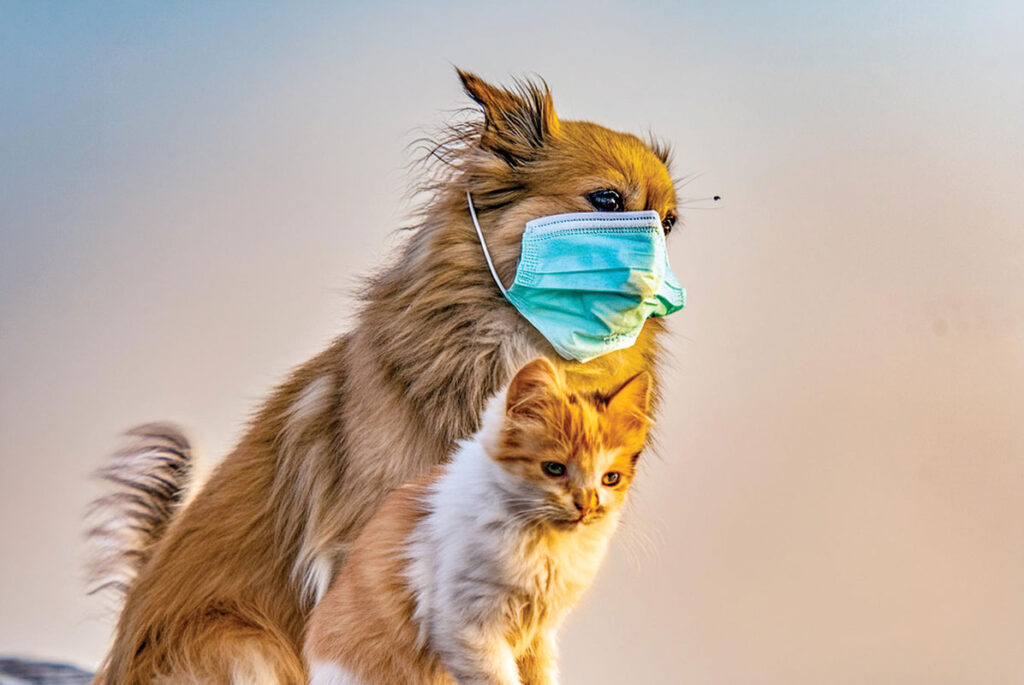
Those environmentally conscious among us are concerned about surface and air pollution, climate change, global warming and several other related issues. But there are also people in this world with a deep love for nature, and have a special place in their hearts for all creatures great and small.
This column is for the animal lovers among us, the ones who are not only worried about the impact of pollution on humans but also on all animals, specifically the pets in their homes, who have become veritable members of their families.
Pollution must be a source of concern for them because pets living in our homes are as vulnerable to its adverse impact as humans. With the Air Quality Index (AQI) touching hazardous levels in most cities, particularly during some months of the year, our pets need special care and attention. Keeping this in mind, I explored the best way to protect our pets from pollution. I also believe that pet owners must take on this responsibility since poor air quality is a result of human action, and no fault of the animals.
In cities, cars and heavy vehicles using petrol and diesel contribute in a big way to polluting the atmosphere. Why any household must have more than one vehicle remains a mystery to me. And why we loathe advocating public transport for those who are young and able is another question that is intriguing.
Besides vehicular pollution, the urban air is also fouled beyond permissible limits by burning of coal, industrial emissions, crop burning, construction and igniting garbage, not to speak of the methane fumes that rise from landfills on the outskirts of every town. Add to this indoor pollution from sources such as cigarette smoke, cooking on cookstoves that are not environment-friendly, using abrasive chemical cleaners, or using coal for fireplaces in winter, and AQI levels go up a few notches higher.
According to a PetsWorld blog, dogs that live in heavily polluted cities have brains that show increased inflammation and neural changes that are responsible for Alzheimer’s disease in human beings.
The impact of pollution is telling. According to a blog on the website of PetsWorld (an online store for pet products), dogs that live in heavily polluted cities have brains that show increased inflammation and neural changes that are responsible for Alzheimer’s disease in human beings. It also points out that indoor pollution is harsh on pets and “special care must be taken in case of brachycephalic dog breeds like Pug, Pekingese, Boxer and Shih-tzu.” The website cites a 2011 study which found that airborne toxins have an extremely negative impact on animals too, especially stray dogs living on the streets. Further, cats, dogs and other pets develop asthma, diseases of the nose and throat, and bronchitis when exposed to year-round air pollution. The study also found that cats exposed to cigarette smoke have reduced lung capacity.
The latest solution in urban areas to pollution is the use of air purifiers in homes. It helps reduce toxins, dust allergens, bacteria and odours, making the air better and healthier to breathe. But there are other solutions provided by indoor plants. Anthuriums free the air of ammonia, and ‘Song of India’ absorbs toxins like xylene, besides Parlor Palm and Phalaenopsis orchids are also effective in cleaning the air.
The Petsworld website also gives some solutions that can be incorporated in one’s daily life. The most important is ventilation — the better ventilated the home, the less the problem for our furry friends. It also suggests growing other indoor plants known to be useful in purifying the air. Philodendrons and Massangeana cane sucks formaldehyde from the air and Pothos clears the air of carbon monoxide and formaldehyde.
To keep animals safe from toxins, the website suggests using natural cleaning agents such as white vinegar and baking soda instead of chemical solvents. For wall paint it recommends those that have a low volatile organic compound density and calls for eco-friendly furnishing including organic cat loungers and dog beds. Pet accessories like collars, leashes and sweatshirts should also be of natural material.
When we walk dogs, we must keep them away from places that have maximum traffic, or where construction activity is taking place. Not only does it spoil the walk for our canine friends, but high traffic zones expose them to noxious fumes that are terrible for their lungs and health in the long run. Construction in the vicinity makes dust fly around and creates a stressful situation for animals and humans alike.
Emily Folk in an online edition of the Ecologist has some other tips that go even further on the green pendulum. She asks pet lovers to try out more sustainable pet food options instead of a regular non-vegetarian diet. She also suggests carrying biodegradable poop bags instead of single use plastic bags for collecting waste when walking the dog. “Our pets are like our children, and we always want to do what’s best for them. But we also need to take care of our planet in order to create a world that can sustain both people and pets for many years to come,” she notes in the article. And rightly so.
Pets have a special place in the minds and hearts of pet parents. Many are heartbroken when one of their animal friends passes away. They cherish memories of their pets through photographs and videos. But there are other eco-friendly ways to keep memories alive. Perhaps, planting a tree to celebrate your animal friend’s life will be as rewarding a memorial as any. The tree will nourish the air in future and help in its small way to add to the greenery in the neighbourhood.
The writer is a senior journalist who writes on environmental issues.






